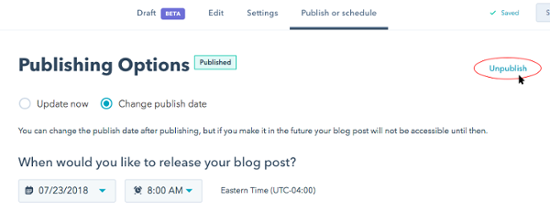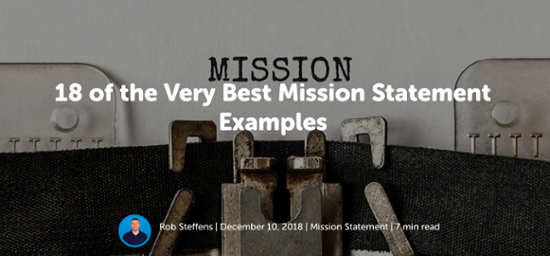Business blogging in 2019 is no joke, and the competition for those top spots on a search engine results page is getting heated.
Some companies have been blogging since dinosaurs roamed the Earth, while others are just now jumping into the ring.
Regardless of what stage of blogging your business is in, this is for certain: Some pieces just don't perform as well as you hoped. Or, as the time passes, some of your best work gets outdated with older information, tips, and examples.
Every business should aspire to provide value to their website visitors through their content, in turn increasing traffic and generating new leads and link building opportunities.
So, when you discover those articles that could use a little pick-me-up, what do you do? Just delete them? No.
You historically optimize them.
What Is Historical Optimization?
The goal of inbound marketing content as part of a robust inbound marketing strategy is to provide useful, informative, and helpful information to visitors (and an added benefit of establishing a company as an authority and building trust with the reader).
And historical optimization, at its core, is the practice of taking old blog content and making it fresh, new, and relevant to readers.
Regardless of if a blog post is just a few months old or a few years old, if it generated traffic that performed well and was written on a topic that people have been searching for, it’s the perfect candidate for historical optimization.
4 Benefits of Historically Optimizing and Republishing Content

1. It Provides New Value to Readers.
We get it. Things change. Strategies improve. Tips and tricks vary.
By editing top-performing content that was previously written, you can update the ideas and advice presented in order to add relevancy to today. While your 2014 post about link building could have been an absolute out-of-the-park hit, the information provided is most likely outdated.
2. You Can Leverage Existing SEO Value.
One of our best practices for republishing old content is to leave the URL alone.
Why? If your article is already out in the world, more likely than not that URL has attracted some sort of link equity.
You don’t want to lose that! Rather, by building off of what you have and providing more value to readers, you can build upon what’s there and improve your SEO.
3. It Distributes “More” Content to Your Followers.
Ok, so it’s technically not more content, since it was already on your website. But, it is more content in that – if republished the right way – it will appear at the top of your blog homepage and can even be sent out in blog subscriber emails!
In turn, your readers will perceive it as a fresh piece of content... well, because it is!
4. You Can Take Advantage of Keywords and Ranking Potential.
In 2013, keyword research and ranking wasn’t as complex and intricate as it is now.
With all the technology at our fingertips today, performing in-depth keyword research can allow you to improve your SEO potential even more. In your updated content, you can sprinkle in valuable keywords and semantically related keywords in hopes to rank higher for those terms.
What Blog Posts Should I Update and Republish?
If you were to go back, update, and republish every single blog you’ve ever written, you might as well crawl into a ball because the process would never end, and you would never have the opportunity to jump in on new ideas.
Instead, you should weed through your many articles to find the ones that fits the bill for a historical optimization. These are:
Posts That Aren’t Seeing Much Traffic
Posts collecting dust on your website should be first priority when it comes to historical optimization.
The main goal of these historical optimizations is to provide more value to the post with more comprehensive detail and use of keywords in order to improve its traffic.
Year-Specific Posts From Previous Years
If you searched for content on influencer marketing and stumbled upon an article titled, “The Impact of Influencer Marketing in 2017,” would you read it? Probably not, and for good reason.
When an article title includes a year, it automatically dates itself when a new year rolls around. So, naturally, visitors will view this information as outdated and irrelevant to their search query and skip right on past it. Thus, the post will lose traffic.
By monitoring year-specific posts, you have a collection of at-the-ready optimizations that can continue to fuel traffic to your site. At Bluleadz, we monitor blogs with dates in the title so we know when to update, build upon, and republish them.
Remember that 2017 post I mentioned? Check out “How the Surge of Influencer Marketing Is Shaping Up in 2019.”
High-Performing Blogs That Are Two Years or Older
While these top-notch articles might be doing great traffic-wise, they could still use a little content refresh since they were written a while ago. With these types of historical optimizations, you don’t have to necessarily re-write the entire post. Just make sure the content is up-to-date and include more recent examples.
Shorter Pieces of Content That Can Be Added To
As your company blog grows and develops, so does your writing style and expectations for sustainable growth. You may find previously published articles that are just a little sparse in content and could use a more in-depth update.
With these types of historical optimizations, build upon what’s already there, and add more context to each individual section. If applicable, add a few more sections to help beef up the piece and provide more value to your readers.
How to Historically Optimize an Article: 6 Easy Steps to Follow

Note: The steps we are about to run through are designed for historical optimizations within the HubSpot platform. However, many of these steps can be completed through your own CMS platform with slight variations.
Let’s get optimizing! (Historically, of course.)
1. Run a Content Audit to Find the Posts That Fit Into One of the Buckets Above.
First things first: You have to find the right content to change! However you choose to perform your audit, look for articles to pluck out and update with new information and examples.
2. Edit the Article Copy.
Head to a specific article, then click “Edit Post.” From here, you can remove, add, and tweak existing content in the post body.
Integrate core topic keywords and related keywords that will generate good results under the new SEO requirements. It’s about trying to answer the questions that visitors are wondering. Additionally, you'll want to update any post images to new, relevant images and integrated alt tags.
3. Update the Title, But DON’T Change the URL.
Since you’ve given your content a little refresh, you might as well do the same to your title! Restructuring your new blog title to include relevant keywords, emotion words, and employing other useful headline tips are essential to drafting new and engaging post titles.
Not sure if your title stacks up? Check out CoSchedule’s Headline Analyzer to help you craft a kickass title.
Here’s the biggest thing about historical optimization – you shouldn’t change the URL!

Because the URL already exists and has some sort of link juice associated with it, changing it will discontinue any more, not to mention any backlinks to that URL will be broken.
If you are adamant about altering the URL, be sure to set up a proper 301 redirect link to send visitors who click on the old URL link to the updated one.
4. Choose a More Relevant Call to Action.
This is one of the critical components of historical optimization — after all, you’re creating content that educates.
However, it also needs to have a call to action or something you want the reader to do after finishing your article. If your company has released more relevant content offers since the post was last publish, you should probably consider switching up what CTA you include at the end to attract more traffic to more recent work.
5. Save Your Changes, Then Unpublish the Article.

Double check that your new content is good to go, then save your changes.
When you do this, you are saving the new updates you’ve made without actually updating the content on the live link (Just make sure you don't press the orange button with the words "update!").
After saving your historically optimized content, unpublish your article. Don’t worry – doing this will just unpublish the live link on your site, but the article and your content will be saved to your blog drafts.
6. Republish!
Now that the link has been removed from your site, head back to your article in the blog editor. Proofread your entire piece one last time to spot any minor grammatical or spelling errors that could have been missed, then click publish now!
When you republish an old piece of content with the same URL, it appears to look hot off the press since it will then jump to the top of your blog homepage.
However, through content updates, proper keyword use, and SEO best practices, your newly written article has just added to what was previously there – and the weight of the URL comes right along with it!
How Bluleadz Historically Updated Content to Increase Traffic: A Success Story Worth Telling
At Bluleadz, we have taken the concept of historical optimization to heart. Our marketing team reviewed some of our top-performing blog posts and optimized them retroactively.
One of the blogs they performed a historical optimization on was “18 Captivating Mission Statement Examples You Need to Read.”

The post was originally published in April 2018. Starting out slow in views, we began to notice a natural spike in organic traffic between August and October 2018, rising from 2,248 views to 10,157 (a 352 percent increase).
Noticing this surge of traffic month over month, we realized that the topic of mission statements was something our personas were actively searching for and, in return, what Google was rewarding in search rankings.
We found an opportunity to go back to the drawing board and add more value to the previously published article, turning our 15-example article into 18 and adding more context to each. The article was then republished in December 2018.
Last month (April 2019), the article reached 24,666 visits from organic search, almost a 1000% increase from when it started gaining traction in August 2018.
In terms of contacts, up until its historical optimization (April–December 2018), the article only brought in 13 submissions and 11 new contacts. Since its update and republication, we’ve received 54 submissions and 49 new contacts.
These results show that adding onto its existing content has brought more value to the piece, which in turn creates more interest and more traffic. However, what makes it even better is that these results will continue to build upon themselves and gain more traction with search engines as time goes on.
This approach to refreshing and remarketing old content is one that we look to implement across our organization as a whole. We aim to incorporate this process into the inbound marketing strategies for each of our clients to make the most use of their old content.
And your business can do it too.
With historical optimization, your marketing team can improve your content across the board, targeting dusty, old content and revitalizing it into fresh new pieces.
Spoiler: The article you just read was historically optimized. Talk about practicing what you preach!


Baylor Cherry
Baylor is an inbound specialist for Bluleadz. As a native Floridian, she enjoys soaking up the Florida sun, buying clothes she can’t afford, and dreaming about one day owning a dachshund.